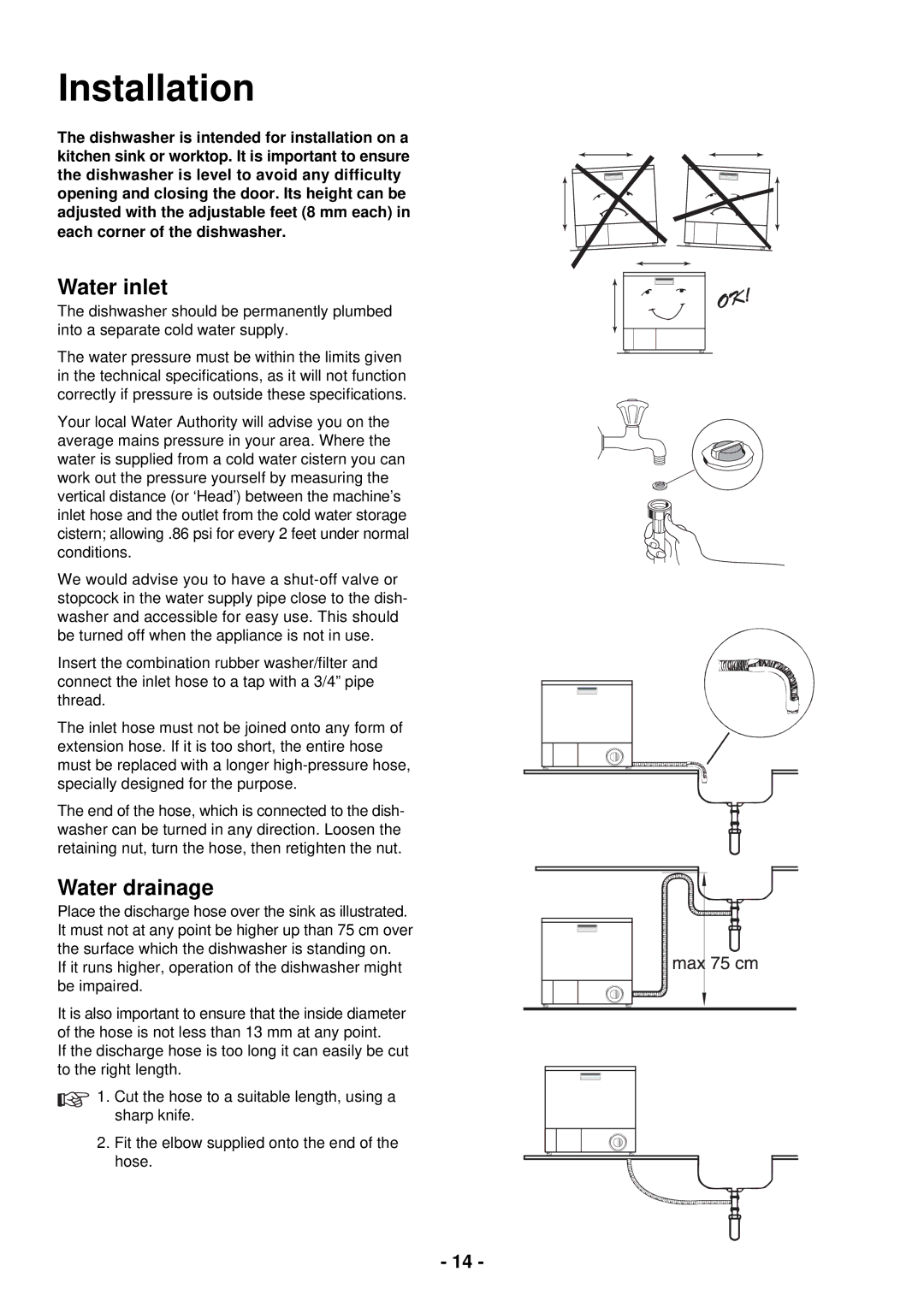
Installation
The dishwasher is intended for installation on a kitchen sink or worktop. It is important to ensure the dishwasher is level to avoid any difficulty opening and closing the door. Its height can be adjusted with the adjustable feet (8 mm each) in each corner of the dishwasher.
Water inlet
The dishwasher should be permanently plumbed into a separate cold water supply.
The water pressure must be within the limits given in the technical specifications, as it will not function correctly if pressure is outside these specifications.
Your local Water Authority will advise you on the average mains pressure in your area. Where the water is supplied from a cold water cistern you can work out the pressure yourself by measuring the vertical distance (or ‘Head’) between the machine’s inlet hose and the outlet from the cold water storage cistern; allowing .86 psi for every 2 feet under normal conditions.
We would advise you to have a
Insert the combination rubber washer/filter and connect the inlet hose to a tap with a 3/4” pipe thread.
The inlet hose must not be joined onto any form of extension hose. If it is too short, the entire hose must be replaced with a longer
The end of the hose, which is connected to the dish- washer can be turned in any direction. Loosen the retaining nut, turn the hose, then retighten the nut.
Water drainage
Place the discharge hose over the sink as illustrated. It must not at any point be higher up than 75 cm over the surface which the dishwasher is standing on.
If it runs higher, operation of the dishwasher might be impaired.
It is also important to ensure that the inside diameter of the hose is not less than 13 mm at any point.
If the discharge hose is too long it can easily be cut to the right length.
1. Cut the hose to a suitable length, using a sharp knife.
2.Fit the elbow supplied onto the end of the hose.
- 14 -
